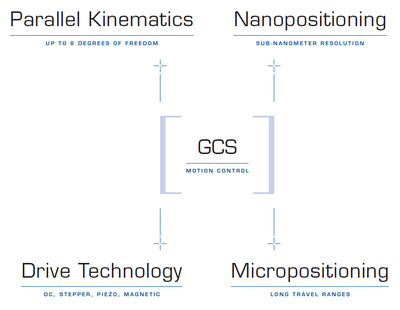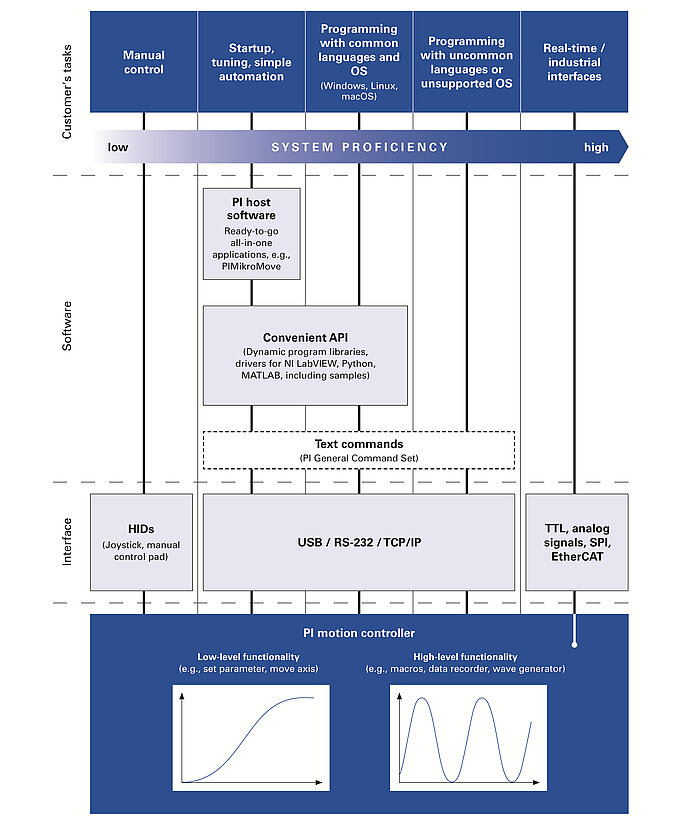GCS ensures the compatibility between PI positioning systems via standardized sets of human-readable commands. Therefore, starting up and programming becomes much easier: Different positioning systems can be operated together and new systems can be integrated with minimum programming effort.
There are different ways of controlling PI controllers:
- The commands can be received via USB, RS-232 or TCP/IP, depending on the controller's specifications
- >> APIs with various librariers and drivers can be used for the automation and integration processes
- >> PIMikroMove® provides a graphical user interface for controlling our controllers; GCS commandos are sent in the background
- From other environments, communication is possible by sending text-based commandos with user-defined implementations
Additional control options:
- Direct interface with a human interface device (HID), such as a joystick or control pad
- Additional interfaces for control, e.g., analog signals, serial peripheral interface (SPI), TTL, or EtherCAT

